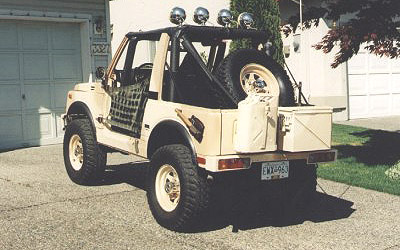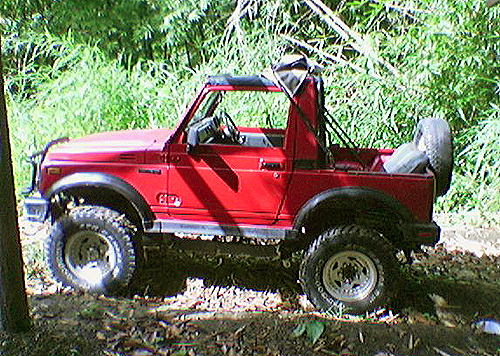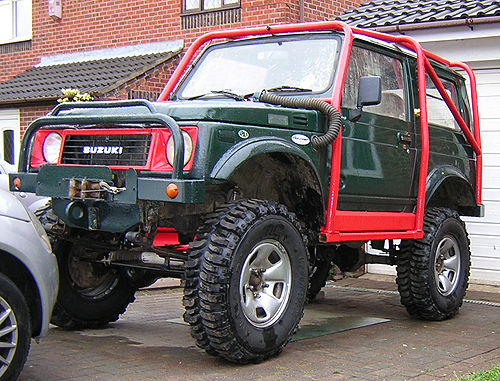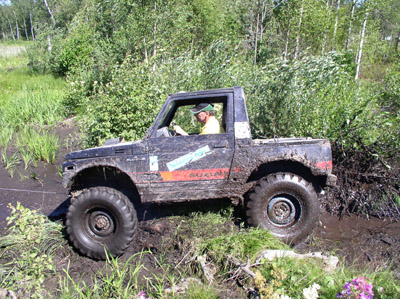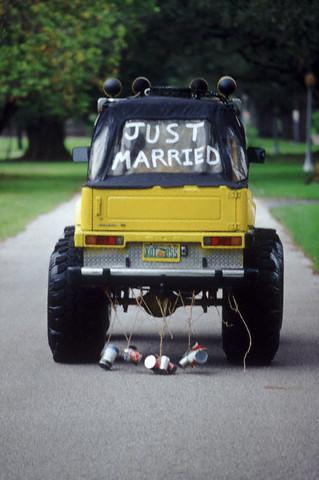What is the best way to clean my soft-top? This is a question that comes up quite regularly. Mother Nature has an uncanny habit of allowing things to get dirty, and the idea of a soft top vehicle is to be able to go out and enjoy the vehicle, rather that stay at home washing it. When the majority of us wash our cars, the soft top is washed as well, although over time this can lead to a build up of dirty residue in the material.
So What Can You Do About It...
There are various different types of soft tops out in the big wide world. They vary from the original Suzuki soft-top to the many and varied aftermarket derivatives. Unfortunately each soft-top has different properties and requirements, however, there is one thing that no soft-top can withstand, and that is - any product containing Petroleum Distillates. Petroleum Distillates are in fact, not compatible with any type of vinyl, as well as many other types of plastics.
There are different opinions when it comes to cleaning and protecting soft tops, but most people agree that you should not use cleaners or conditioners containing petroleum solvents, harsh abrasives or Citric based cleaners. Should any cleaning compound containiing these ingredients be used, you may cause irreparable damage to your soft-top. If you aren't sure about a product, contact the manufacturer and request a copy of the COSHH Data Sheet. Look under the section entitled "Hazardous Ingredients". If it lists any petroleum distillates, do not use it on your top.
Basic Cleaning...
When cleaning your top, DO NOT use solid or granulated cleaners. They will mar the natural finish. A good thorough cleaning with some elbow grease, along with oil soap should keep your roof looking good and remove most stains. Again, any non-granulated, non-abrasive cleaner may be used as long as it does not contain petroleum distillates or delaminane (citrus).
Here is some additional information, which may prove helpful. Black streaks are the result of dust and dew, which mixes to slurry and then migrates over the edge and down the sides. Unsightly as they may be, they are not harmful.
Washing should be done out of the sun and preferably in the early morning to take advantage of the emulsifying action from the dew. Cleaning should never be done on a hot surface.
Unorthodox Cleaning Method...
If the recommended method fails to spruce up your bargain buy and you really can?t bear to use it in such a bad state then you could try this unorthodox cleeaning method. Bear in mind that this is done at your own risk, and Suzuki Club UK can not, and will not be held responsible for any damaged caused to your soft top!
This method of cleaning is really NOT recommended!
It really is a last resort before an otherwise sound hood is binned. After washing with warm soapy water and using a scrubbing brush, any dirt that is left will be pretty in-grained and therefore very hard to shift. If you have a power washer it?s worth blasting it with this using the most powerful jet you have. This is particularly good for cleaning up the stitching and removing algae. You can do this with the hood fitted to your SJ or have it spread out on a hard surface. Enlist a willing helper who can be getting jiggy with the scrubbing brush on one part while you concentrate on another area.
The next course of attack uses biological washing liquid or powder, the sort you put in your washing machine. If using powder, mix with a little water to form a runny paste before using. Working a small area at a time apply the liquid or powder with a sponge and using small circular motions scour the surface. This will help the mixture get to work on the ingrained dirt. Leave for approximately 30 minutes then using a scrubbing brush dipped in hand-hot water continue to scour in the same circular movements as before. Then simply rinse that area with cold water and start on the next. It?s best to just do one panel initially. Once it is well rinsed and dried off you will get an idea if it is worth continuing.
Don?t expect it to look brand new, all soft tops, even new ones gather stains, and remember, with regular cleaning the marks left may become less noticeable. If you really can?t use it for everyday use then you might have to splash out on a new one. Why not keep the old one for off-roading? Saves ruining a new one!
Please remember, this method of cleaning may cause damage to your soft top, as stated, it really is the last resort before the dustbin!
Credits...
The article on Unorthodox cleaning methods was written and submitted by Caryl Ireland.


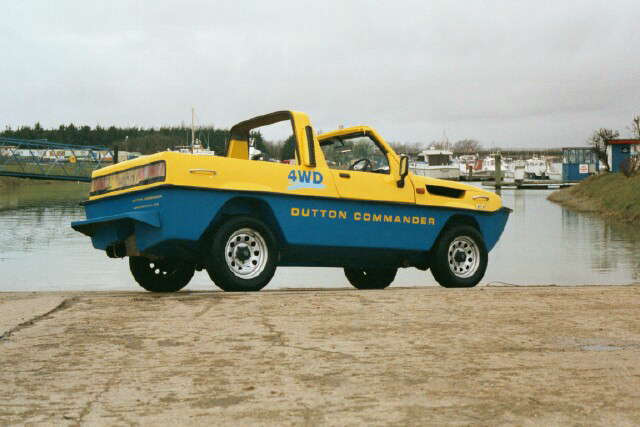
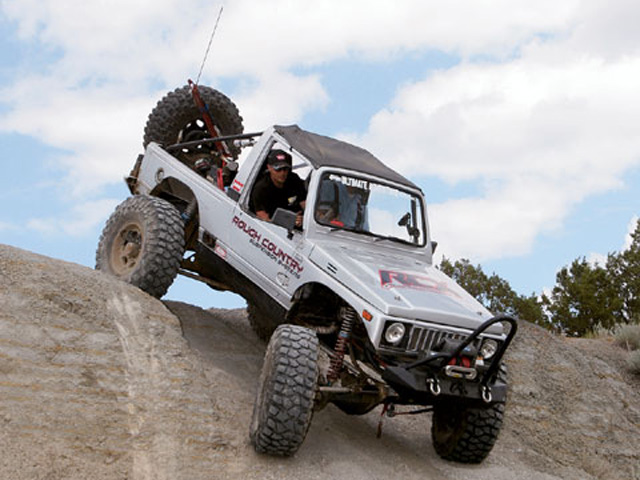
![0610_4wd_01z+suzuki_samurai+group_of_suzukis[1274].jpg](/images/gallery/favourites/0610_4wd_01z+suzuki_samurai+group_of_suzukis[1274].jpg)






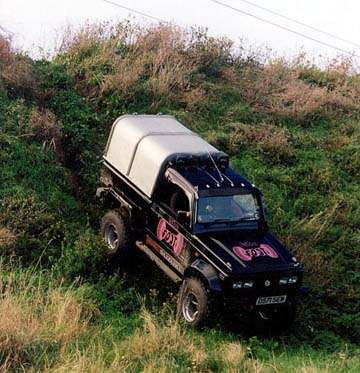
![fenderfrt6_SJ-1[376].jpg](/images/gallery/favourites/fenderfrt6_SJ-1[376].jpg)
